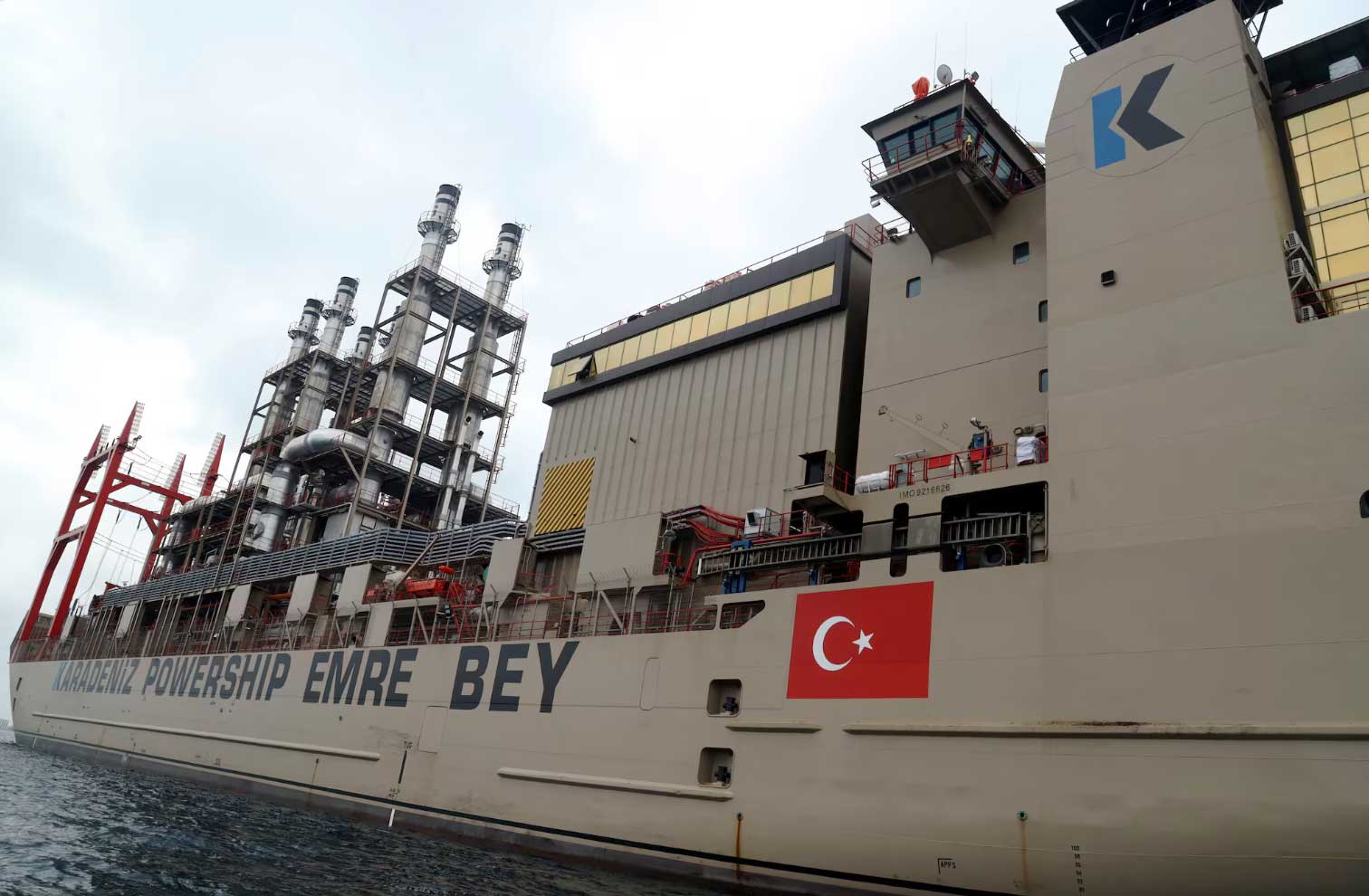The Turkish power generation barge, operated by Karpowership, is set to commence operations. The vessel, named Emre Bey, is docked in front of the Las Esclusas electrical substation in southern Guayaquil.
The Emre Bey will be integrated into Ecuador’s national interconnected system (SNI), boasting an installed capacity of 100 MW. It is scheduled to remain in the country for 18 months, until 2026. The lease of this equipment costs approximately $115 million.
Energy Minister Antonio Goncalves expects the barge to start supplying power on Monday, August 26, 2024. This barge represents one of the initial firm solutions to Ecuador’s ongoing energy crisis.
The cost of energy produced by the barge is around $0.20 per kilowatt-hour (kWh), comparable to the average cost of electricity imported from Colombia. In 2023, Ecuador purchased electricity from Colombia for about $220 million, with the 2024 expenditure projected to reach approximately $300 million.
The leasing of the barge addresses part of Ecuador’s 1,080 MW energy deficit. Roberto Aspiazu, executive president of the Ecuadorian Energy Chamber, noted that although this solution is costly, it is preferable to the expense of prolonged power outages.
Earlier this year, during power outages, then-acting Energy Minister Roberto Luque reported that each hour of blackout cost the country $12 million, with outages exceeding 12 hours per day.
Marcelo Moya, director of the School of Mechatronics Engineering at UIDE, acknowledges that the Turkish barge helps mitigate the energy crisis but is insufficient alone, as the deficit is larger. He notes that despite plans for 340 MW of onshore generation starting in December and an energy efficiency campaign, the country will still face a significant shortfall.
More ships and thermal units
Additional solutions from President Daniel Noboa’s government are expected to materialize in the second half of 2025, leaving a high risk of blackouts in the interim.
The Ministry of Energy anticipates the Turkish barge will begin generating its 100 MW for the SNI from August 26, 2024, due to low flow levels in the country’s hydroelectric plants.
The barge employs an anchoring system with eight stock anchors and corresponding chains to secure it to the muddy and sandy riverbed of the Guayas River, ensuring the vessel’s stability.
Although Karpowership has until September 11th to commence electricity generation, the contract stipulates a lease amount of $114 million for 18 months.
The Emre Bey arrived at the Las Esclusas Electrical Substation dock on the morning of August 22, 2024, after being towed from a location three kilometers south, where it had arrived on August 12th.
This barge is one of several temporary measures by the National Government to address the energy crisis, which also includes plans to purchase additional thermal units. The government is also preparing to issue a tender in early September for one or two more electric barges, potentially with capacities of up to 200 MW each, to be stationed in the Las Esclusas area.
The Turkish vessel can operate up to 200 meters from the shore, connected by a pipeline, and uses 260 meters of cable with two towers installed a month ago to link to the electrical substation.
While two old, unused electric barges currently owned by the Ecuadorian Customs Service (Senae) remain moored at the Termoguayas docks, they are slated for removal and scrapping due to their risk to navigation and the operation of the new barge.
The Emre Bey was selected because it does not require a dock. However, if a dock were needed, sedimentation at the site could pose problems, with an estimated draft of 3.5 meters and the ship’s hull depth at 6.2 meters.
The Ecuadorian Navy’s Dredging Service has not yet received a formal request to dredge the area. Meanwhile, work on the barge continues, with over 80 engineers preparing the plant to generate 100 MW for the SNI.
The 100 MW from the Turkish barge are part of the 341 MW secured through contracts to address the country’s energy deficit, which totals around 1,080 MW. The Ministry of Energy and Mines has launched a plan to contract 750 MW of new electric power generation, with a projected cost between $900 million and $1 billion.



0 Comments